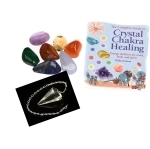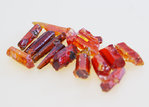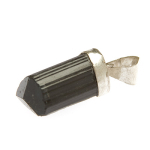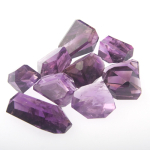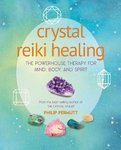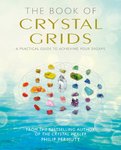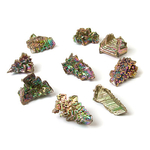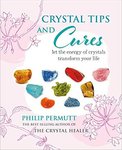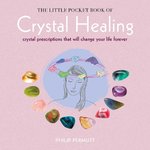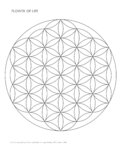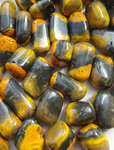Shop Categories Philip's Crystal Blog

Philip's Crystal Blog
Philip Permutt's musings on crystals, crystal healing, life, the universe and everything all contained in one simple blog. Although Philip writes extensively in his books on crystal healing, his Take a Break's Fate & Fortune Crystal Clinic with Philip Permutt monthly column and other magazine articles he still occasionally finds time to write things here!
Crystals for Meditation
Crystals for meditation
Crystals for Meditation, crystal meditation, meditate with crystals, crystals and the meditative state
All crystals support meditation by acting as a point of focus, many enhance specific parts of the meditative process too and all types of meditation, of which there are many, promote spiritual and healing effects of any crystal.
Crystal specifics for meditation
Agate can help you see what’s wrong and how you can heal and is a helpful aid to visualisation.
Amethyst crystals expand the meditation experience making it seem fuller and more detailed. It can also help you to centre yourself.
Ametrine speeds the meditation process so you can have more time in a state of bliss.
Apophyllite acts like a mirror to your soul so you can easily see what’s inside.
Blue quartz promotes the successful search for enlightenment.
Golden calcite can focus the pictures in your mind during meditation.
White calcite helps you to find the answers that you seek.
Carnelian promotes endurance and can be helpful for retreats.
Celestite can support your targets in life and help you find your goals and ambitions.
Charoite helps to calm the body and still the mind.
Fluorite brings focus and clarity.
Garnet grounds emotion from the heart through the base chakra and frees the heart to truly experience the meditative state.
Hessonite promotes your development and understanding through meditation.
Red jasper helps you to stay connected to the earth whilst experiencing the highs of meditation, a grounding stone.
Kunzite supports right brain activity, intuition and creativity and can help to keep you centred when you’re letting go of the things you no longer need.
Kyanite promotes meditation and helps you to begin at the start of a meditation.
Malachite is the stone to help you look within yourself and acts as a magnifying glass to your inner feelings.
Morganite fills an empty heart and promotes love; sending it out to others.
Fire opal helps you to see and understand the pictures in your mind.
Peridot can help you find enlightenment.
Petalite brings the answers you find in the special moments of meditation into your everyday experience.
Petrified wood can link you to your past life experiences.
Pietersite is great for guided meditations helping you to picture images in your mind.
Prehnite is helpful at the beginning of your meditation to get you on the right track.
Quartz crystal is a fantastic meditation tool helping all types of meditation whether as a focus for the meditation or just by its energy being present.
Ruby has the ability to create a circuit from the base chakra, through the heart and up to the crown chakra and back down to the base linking all aspects of the meditative experience.
Smokey quartz can remove grief and free you from past events that are holding you back.
Spirit quartz is helpful for group meditations to bring a common experience.
Tanzanite brings understanding of the visions and messages gleaned in meditation.
Tiger’s eye can help you to send distant healing.
Titanium quartz illuminates your options.
Imperial topaz is a magical meditation mineral! It promotes every aspect of the art of meditation.
Tourmaline is good for meditation and Verdelite, a green variety of tourmaline, in particular promotes visualisation.
Turquoise helps to bring your meditation experiences back to Earth.
Vanadinite can completely clear the mind of all thoughts and distractions.
However you choose to meditate you'll find that crystals enhance every stage of the meditative process, providing a point of focus and bringing clarity of mind.
Crystals for Meditation, crystal meditation, meditate with crystals, crystals and the meditative state
Turquoise
Turquoise
Turquoise is a secondary cooper appearing as a blue or green rock. The colour being due to copper and iron. The more iron the greener the stone, the more copper the bluer. It forms as nodules, veins, crusts, stalactites and rarely, small crystals. The name comes from the French "Pierre Turquoise" meaning Stone of Turkey.
Turquoise is the birthstone of December and has astrological affinities with Aquarius, Sagittarius, Cancer, Scorpio and Pisces. It is a stone held sacred by Medicine People all over the world and is often associated with the night.
Physically Turquoise acts as a general tonic for the body. Boosting the immune system and strengthening all tissues. It aids cellular and tissue regeneration by promoting the absorption of nutrients. It is a wonderful stone to work with before or after any surgery, illness or when recovering from disease. It is also said to prevent physical accidents and prepare the body for traumatic events, such as surgery. Turquoise gives you a boost when you're feeling run down. It is also helpful in treating conditions of the spine.
Because of its effect on the immune system turquoise is protective and is said to prevent accidents and affects from environmental pollutants causing allergic reactions. Its has also been used to protect against the 'evil eye' and is a traditional form of protection for travellers. Some say it will protect you from radiation emitted from microwaves, mobile phones, computers and television screens.
Turquoise helps many chest complaints including asthma, bronchitis, breathing problems, shortness of breath, poor respiration, flu symptoms and fevers.
It is also beneficial in the treatment of arthritis and rheumatism. It is a traditional remedy for hip problems and is high in phosphoric acid, which is the homeopathic remedy for such conditions. It will also help alleviate wind pains and promote weight gain when you need it.
Perhaps Turquoise comes into its own in the area of the Throat Chakra. It is wonderful for public speaking and creative expression. It gives you the courage to communicate your own ideas and to connect to the spirit world.
Turquoise is a stone of friendship and emotional balance. By helping you express yourself it releases emotions and trauma often buried for many years. It will give you the strength to cope with these releases on physical, emotional, mental and spiritual levels. Turquoise promotes trust and kindness, dispels negativity and thereby reduces stress. It is a grounding stone, helping you to bring spiritual experiences into your everyday life. It helps to balance Yin and Yang energies within you allowing you to see the beauty in everything. This ties in with Turquoise traditionally being used as a love charm, promoting spontaneity in romance and love. It is also linked to friendship and loyalty and it is thought to change colour if your lover is unfaithful or the wearer is close to death. (Don't panic! If your Turquoise pales, leave it in the bathroom or a damp area for a few days and the colour will return. If it doesn't... then panic!).
It is said that Turquoise increases your innate healing powers and can be a steadying influence when placed in the centre of a room or group of people.
Historically Turquoise is linked with horses, bringing surefootedness. The Romans believed it protected their horses from accidents and fatigue and jockeys, hunters and horsemen often carry it to this day.
To Native American Indians Turquoise is perhaps the most sacred of stones. It represents the Blue Road, that is your spiritual path through life. It also represents Father Sky, Breath of Life and Spirit. It protects the wearer from the night and malevolent spirits. Turquoise connects Father Sky to Mother Earth and is used extensively in Rainmaking ceremonies and whilst Journeying.
The Aztecs made sacred Masks of Tezcatlipoca (a powerful God) from pieces of Turquoise shaped around a human skull. Tibetan Shamans used it in all ceremonies for protection. It is often set in the forehead of statues of Buddha to symbolise knowledge of things to come.
Turquoise was one of the most prized stones in the ancient world. It is known that Turquoise was mined in the Sinai Desert as far back as 3900BC and made into beads, ornaments, jewellery and scarabs. In fact the use of Turquoise goes back to the earliest jewellery ever found.
The story of The Turquoise Arrow comes from Tibet. It is fired from a Golden Bow. The Turquoise Arrow representing the Heavens and Golden Bow the Solar Rays of the Sun. In Tibet it is known as the 'Gem of the Gods'.
Traditionally Turquoise helps the spiritual person resist the temptations of the material world.
There is a magical ceremony for inducing wealth and financial gain. It must be performed in the hour of Jupiter. Holding a piece of Turquoise in the right hand, speak your desire into the stone whilst holding a steady gaze on it. Like all magic repetition increases the efficiency.
turquoise, turquoise tumble stones, turquoise crystal
Tucson Gem & Mineral Show 2014 - Highlights

We are back from an amazing trip to the Tucson Gem & Mineral Show and are shipping our crystalicious stock which should be here next week (w/c 24/2).
It's the biggest crystal, rock, gem and mineral show in the world. It's out of this world... well some of the meteorites, moon rock and tektites are :-)

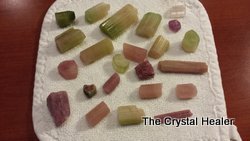 At the unit right now are tourmaline crystals, moldavite, Libyan glass (a yellow tektite with a similar feel to moldavite) zincite and a few moldavite pendants.
At the unit right now are tourmaline crystals, moldavite, Libyan glass (a yellow tektite with a similar feel to moldavite) zincite and a few moldavite pendants.
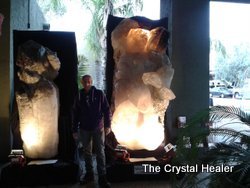 On our first day we found magical mini quartz crystals perfect for quartz stars, pretty pink Manganoan Calcite specimens (should have said bloody amazing!!! They are the best we've seen!!), stunning silver crystal specimens - which are also the very very best we've ever had! And a newly found crystal blue barite - much much more to follow about this one!
On our first day we found magical mini quartz crystals perfect for quartz stars, pretty pink Manganoan Calcite specimens (should have said bloody amazing!!! They are the best we've seen!!), stunning silver crystal specimens - which are also the very very best we've ever had! And a newly found crystal blue barite - much much more to follow about this one!
 The second day started aquiring Fire Opals from a Mexican gentleman who'd probably been pouring tequila on his cornflakes! Que Sera stone, hundreds of hunky Herkimers, Lemurian quartz crystals and pink Lemurian quartz crystals, Super 7 pendulums - and YES you did just read that correctly - Super 7!!!! Then had a lovely hour with our old friend Melody and swapped stories and books.
The second day started aquiring Fire Opals from a Mexican gentleman who'd probably been pouring tequila on his cornflakes! Que Sera stone, hundreds of hunky Herkimers, Lemurian quartz crystals and pink Lemurian quartz crystals, Super 7 pendulums - and YES you did just read that correctly - Super 7!!!! Then had a lovely hour with our old friend Melody and swapped stories and books.
After lunch we had much Brazilian dealing picking up rutilated smokey quartz, excellent chevron amethyst crystal points perfect for pain prevention, one very special crystal skull carving, tourmaline crystals including watermelon, bi-colours, pink, elbaite and one piece of rare achroite A large batch of natural citrine crystals, wondrous polished natural citrine points, large quartz double terminated crystals - perfect for talking crystals and a batch of natural dark smokey quartz including one massive crystal point - a day of Wows!
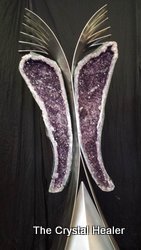
 Early start again on day 3 aiming at spending the morning with our old friend David Geiger but we were slightly distracted as happens often in Tucson… So we start selecting some very interesting crystal balls in various materials including pyrite, rhodochrosite, manganoan calcite, lepidolite, nephrite jade, gabbro (more of this later :-)), chrysocolla and epidote. So on to visit our friend David when funnily enough something caught our attention… Chinese jade carvings including a wondrous white jade Quan Yin. Right on to David… Gabbro… what exactly is gabbro? I think I’ll write a blog on this one when I have time because the energy was absolutely amazing… so we bought some more! Wands and palm stones … So David, right? Yea! We finally arrive at his show room 2 1/2 hours after we get to the show and Lyn goes woosey… just like she did when we first met the original Russian Lemurian quartz crystals over a decade ago… wonder what she’s got cooking this time… stay tuned...
Early start again on day 3 aiming at spending the morning with our old friend David Geiger but we were slightly distracted as happens often in Tucson… So we start selecting some very interesting crystal balls in various materials including pyrite, rhodochrosite, manganoan calcite, lepidolite, nephrite jade, gabbro (more of this later :-)), chrysocolla and epidote. So on to visit our friend David when funnily enough something caught our attention… Chinese jade carvings including a wondrous white jade Quan Yin. Right on to David… Gabbro… what exactly is gabbro? I think I’ll write a blog on this one when I have time because the energy was absolutely amazing… so we bought some more! Wands and palm stones … So David, right? Yea! We finally arrive at his show room 2 1/2 hours after we get to the show and Lyn goes woosey… just like she did when we first met the original Russian Lemurian quartz crystals over a decade ago… wonder what she’s got cooking this time… stay tuned...
We found eudialyte which is becoming harder to find but works so wonderfully with morganite to clear things out and heal the heart. An interesting ad hoc meeting with a US publisher and somewhere along the way we also picked up amethyst, citrine, quartz, rutilated quartz and tourmalinated quartz freeform crystals. Oh yes and kyanite sticks, watermelon tourmaline slices and I almost forgot the moldavite pendants We ended the afternoon meeting up with Ashley Leavy & Diane Doughman from Mimosa Books. Right we’re off to bed and we’ll be up bright and early again tomorrow bringing you the best from Tucson!

Sunshine greets our 4th day in Tucson as we wander to one of our regular Chinese dealers and as is the way here the deal is ongoing and might be another day or 2 to complete but I can tell you that it includes stunning lapis lazuli points and bowls and a selection of crystal bowls, some unusual tumble stones,
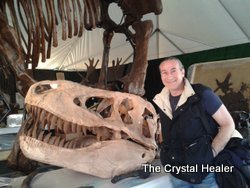 palm stones (that we have an idea for) and several other crystal treats Then we found some great moldavite and zincite. Had most of the afternoon off and wandered in to look at a fossil show… where we bought… erm… No! Not fossils but more crystals Small specimen pyrite crystals, malachite, pyrite suns, amazing azurite specimens and spacey meteorites that are out of this world
palm stones (that we have an idea for) and several other crystal treats Then we found some great moldavite and zincite. Had most of the afternoon off and wandered in to look at a fossil show… where we bought… erm… No! Not fossils but more crystals Small specimen pyrite crystals, malachite, pyrite suns, amazing azurite specimens and spacey meteorites that are out of this world
Lots more to see and do… see you tomorrow night x
The Tucson Gem & Mineral Show always holds surprises. Sometimes it’s the people you meet, sometimes the crystals. On day 5 we had 2 amazing crystal finds… first was early in the day, in fact one of our first buys, a perfect miniature dioptase cave and the second was right at the end of the day and our last buy; a crystalicious collection of super polished crystal points including amethyst and smokey quartz elestials, clear, rutilated and tourmalinated quartz, citrine and golden healer quartz. It’s a one off crystal collection that we’re sure you’ll fall in love with.
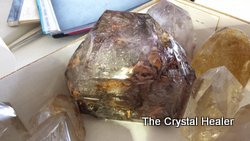 Other crystal finds include black tourmaline crystals, pink opal, really bright orange calcite wands, lava rock palm stones, very clear quartz standing crystals, and blue apatite.
Other crystal finds include black tourmaline crystals, pink opal, really bright orange calcite wands, lava rock palm stones, very clear quartz standing crystals, and blue apatite.

Magical malachite and great Native American horn rattles signed by the artist, sage smudge sticks, abalone shells, key chains/key rings, neck pouches and 1 very special smudging fan. I know several people who will be waiting for these to arrive!
Day 6… a day of moving boxes! Arranged the shipping and started loading our pallet. Collected our crystals from our Mexican friends including blue and orange calcite, obsidian arrowheads, some very special natural chalcopyrite,hand size specimen desert roses, large calcite display pieces and acquired some lovely scolercite from the stand next door. We finally found some small selenite spheres – it seems that no one brought them to the show! We found some amazing tumbled natural citrine , sunstone and “African gold” that feels amazing! I was just drawn to it as it screamed at me across the tent.
Then rounded the day with one of our specialities… aqua aura We are bringing back clusters, points, drusy, stars, mini crystals for quartz star healing technique, DT crystals, angel aura, titanium quartz and one very, very special large aqua aura cluster fantastic quality.
We also met Judy Levy from Maui who stocks and loves my books and invited us there next year to teach my crystal healing courses - what a wonderful world Tucson can be...
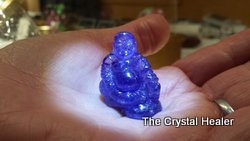 Our find of the show!!!! A beautiful Buddha carved from a single large tanzanite crystal! Wow!! Seriously crystalicious :-)
Our find of the show!!!! A beautiful Buddha carved from a single large tanzanite crystal! Wow!! Seriously crystalicious :-)
The next day was a day off from crystal shopping and we absorbed ourselves in the desert and American Indian Culture...
Day 8… Back to work! And what a great day! Went back to buy ALL the small pyrite crystal specimens that we could because they’re really amazing both energetically and as a collectors mineral, and because they’re small they are very inexpensive We also scored a bountiful batch of biotite mica. Brilliant black tourmaline crystal pendants set in silver. A small stunning collection of Buddhas and Ganeshes and a shell (?) and an eagle, which were all carved by hand by very spiritual people from India and all have a beautiful soft energy. Hand polished kyanite palm stones. And one of the finds of the day Libyan glass tektites from… er… Libya. One more day of crystal shopping to go…

Early start on our last buying day as we go to several shows to do the final haggling and pick up some of the things we've seen but haven't bought yet then planning to meet up with American author Hibiscus Moon for a scenic coffee at the end of the day.
New stock will be here next week. Contact us to arrange an appointment to see our amazing, beautiful crystalicious crystals when they arrive!

Tucson Gem & Mineral Show 2014
The Tucson Gem & Mineral Show is the biggest crystal, gem, mineral and fossil show in the world. It is a massive event that almost takes over the city. To give you an idea of the scale - in the UK a mineral show may have 30 - 200 exhibitors. In Tucson there are around 40 shows (yes, forty!). There are dozens running at the same time. Some run for over 3 weeks whilst others are only on for a few days. They are in hotels, resorts, exhibition halls, tents both small and large... very large... very, very large with some covering several acres! The smaller ones have around a couple of hundred exhibitors and the 5 largest have over 1,000 exhibitors in each! Someone once worked it out that if you spent 5 minutes at each exhibitor, didn't sleep, eat or stop to buy anything, then it would take about 5 weeks to go round and see everything. Most of the shows are only on over 2 weeks!!
So we travel 5,281 miles... each way... walk around in the Arizona winter sunshine, whilst it's mostly snowing and raining and windy and wintry at home, looking and the most beautiful and unusual things on this planet. Work, work, work... Life can be so tough :-)
But we also remember that we are actually working and we'll probably spend 80% of our anual budget for stock in 10 days!
So please feel free to let us know anything you'd like in the way of crystals, fossils and Native American goods and we'll try and find whatever you want - see below...
Iceland Spar: The Rock That Discovered Optics
Iceland Spar: The Rock That Discovered Optics
A Guest Blog Post by Roger Cicala
Every year, I can’t think of anything I want for Christmas. So this year, I was pretty excited to come home and tell my wife, “I know exactly what I want for Christmas. A nice big piece of Iceland spar.” I even sent her a link to make it easy. (It’s certainly a comment on our times that I sent a text link across the room to my wife.)
-

- It’s not motion blur, it’s Iceland spar!
“Really? You want a $100 rock for Christmas?” she asked. I considered mentioning that the price of the rock I want is a tiny fraction of the price of the rock she wants, but thought better of it because she was giving me that look she gives me sometimes. You know, the look that says she knows that at some time there was some reason she chose me, but at this moment she can’t remember when that time was nor that reason.
Instead, I started to explain how Iceland spar is probably the coolest, most important substance ever. How the Vikings probably used it to find America. How Iceland spar was a key to discovering what light actually was. That every great name in optics from Huygens, to Newton, to Fresnel, and even Edwin Land (of Polaroid fame) used Iceland spar. How a shortage of Iceland spar in the late 1800s was considered an emergency by almost every industrial nation. That Iceland spar helped win World War II and can make things invisible.
Of course, before I could tell her even half of that stuff, she rolled her eyes and wrinkled her nose the way she does when the dogs or I bring something into the house that she feels would best be left outside to further decompose. She did look at the link I sent, though, because she asked, “Why does something called Iceland spar come from Mexico?”
I’m pretty sure she wasn’t particularly interested in the answer, because she immediately started talking to herself. Something about whether there were mature, grown-up males anywhere on the planet. My response, that they raised unicorns near Atlantis, apparently has created enough ‘alone time’ for me to write this post and tell you all the cool stuff I didn’t get to tell her. And to order a piece of Iceland spar, because I’m fairly certain it won’t be under the tree.
So, What is Iceland spar?
Iceland spar is a crystal of calcite (calcium carbonate). Calcite is a fairly common mineral and comes in a spectacular range of colors caused by the impurities it contains.
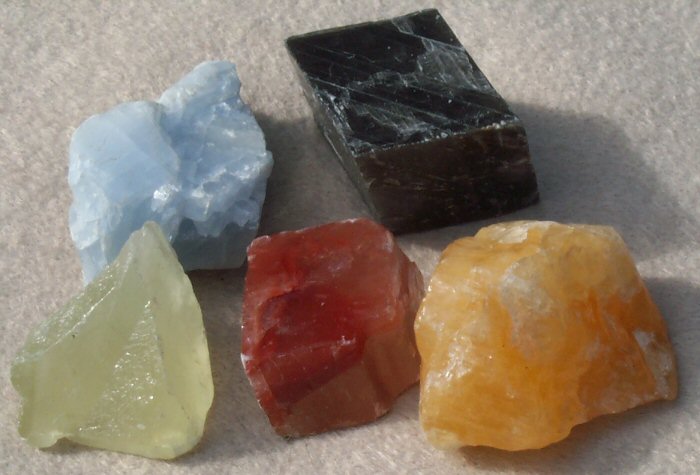
- http://gwydir.demon.co.uk/jo/minerals/alphabet.htm
Iceland spar is rather unique among the calcites. It contains no impurities, so it’s nearly colorless and transparent to both visible and ultraviolet light. For centuries, the only source of this pure calcite was located near Reydarfjördur fjord in eastern Iceland, hence most of the world called it Iceland spar (spar means a crystal with smooth surfaces). The Icelanders just called it silfurberg, meaning silver rock.
A crystal of Iceland spar has two very interesting properties. First, it is a natural polarizing filter. Second, because of its natural polarization, Iceland spar is birefringent, meaning light rays entering the crystal become polarized, split, and take two paths to exit the crystal – creating a double image of an object seen through the crystal.
There is good evidence that the Vikings used the polarizing effect of Iceland spar to navigate the North Atlantic. The constant fog and mist in the North Atlantic often make navigation by stars or sun impossible. The Vikings called Iceland spar a ‘sunstone’ because the polarizing effect can be used to find the direction of the sun even in dense fog and overcast conditions. It can even find the direction of the sun when the sun is actually below the horizon, as happens when you’re sailing above the Arctic circle.
-

- The polarizing effect of Iceland spar can accurately locate the sun even through heavy clouds or mist. If you’re a Viking. I’ve tried it and had no success at all. Credit: ArniEin, WIkipedia Commons
The second interesting feature of Iceland spar is birefringence, meaning it refracts light into two separate images, is more noticeable. The double image may just seem mildly interesting to you and me. But it turned the scientific world (at least the optical part of it) upside down back in the 1600s.
-

- A piece of Iceland spar on my worktable, doubly refracting the gridlines.
Iceland Spar and the Theories of Light
Rasmus Bartholin of Copenhagen made the first written reports about Icelandic spar in 1669. At the time, Snell’s law of refraction were well known. Snell’s law said a regular crystal would bend light rays a given amount and there was a nice formula to calculate that amount. But Bartholin’s report showed that Iceland spar bent light two different amounts, creating two different images. This seemed to break Snell’s law.
Within a few years, Bartholin’s findings had been discussed throughout Europe and scientists (they would have called themselves natural philosophers back then) were begging for samples of Iceland spar. (They had to beg from people in Denmark, like Bartholin, because Iceland was part of the Danish Kingdom.) Among those begging were Christiaan Huygens and Isaac Newton.
Christiaan Huygens, in addition to originating Troy Polamalu’s hair cut, was an amazingly brilliant and productive man. He discovered the formula for centripetal force, invented the pendulum clock and the pocket watch, and discovered Saturn’s rings and largest moon (Titan) as well as the Orion nebula.
-

- Christiaan Huygens (left) and Troy Polamalu. Coincidence?
Huygens spent over a year experimenting with Iceland spar after Bartholin sent him some samples. He discovered that putting a second piece of Icelandic spar over the first piece didn’t make 4 images out of the two seen through the first piece of spar. In fact, by rotating a second piece over the first, he could make either of the original two images disappear.
The reason, we now know, is that Iceland spar is a natural polarizer. It splits the incoming light into two polarized beams, making two images. By using a second piece of Iceland spar he could block either of the polarized images originating from the first piece. I don’t have a second piece of Iceland spar handy, but I can do the same thing Huygens did by putting a polarizing filter on my lens. Depending upon which way I rotate the polarizer I can eliminate either one of the refracted images.
-

- Image through Iceland spar (top), and then two images taken with polarizing filter.
Huygens decided the two refractions were best explained by considering light a spherical wavefront; that the crystal separated the waves in two slightly different directions because of different velocities of the waves. He developed formulae mathematically describing the geometry of such waves, which originated much of modern geometric optics. Unfortunately, his wave theory of light was not widely accepted at the time, partly because his longitudinal waves did not really explain birefringence very well. His formulae for geometric optics were accepted, though, because they generally worked.
Isaac Newton had already determined that white light is made up of various colors and that the different colors refracted different amounts (what we now think of as chromatic aberration). He had decided that light was not waves, but rather ‘corpuscles’ or particles (which is also correct). He proved that Huygens wave theory could not really explain the double refraction of Icelandic spar. Instead, he claimed, birefringence occurred because light particles had two sides, and the crystal separated those sides. Newton couldn’t prove this, of course, but his reputation being what it was people generally accepted it for the next 100 years or so.
-

- Isaac Newton
Iceland spar, then, contributed to the original development of both the wave and particle theories of light as the great optical scientists of the day tried to explain birefringence. Oddly enough, neither theory explained birefringence very well. At the time, both theories were partially correct and partially incomplete. They would remain that way for over a century until Thomas Young came along.
Young definitely proved the wavelike nature of light in 1801 in a series of experiments that (unfortunately) had nothing to do with Iceland spar. Soon after that, though, a French scientist, Etienne Louis Malus, noticed the polarizing effects of Iceland spar when he rotated it and looked at sunlight from various angles. He experimented with it and eventually developed Malus’ Law, which predicts the strength of a beam of polarized light when passing through another polarizer.
A decade later, both Young and Augustin-Jean Fresnel (of Fresnel lens fame) finally explained the polarization of Icelandic spar. When they thought of light waves as transverse (like ripples in a pond) not longitudinal (like a slinky), then polarization of the waves was possible, explaining the birefringence of Iceland spar. It was nearly 150 years after Huygens that Young and Fresnel finally developed a wave theory of light that explained polarization and birefringence.
Using Polarized Light
Once there was a good understanding of how Iceland spar polarized light, it wasn’t long before people put this new knowledge to practical use. With simple pieces of Iceland spar, scientists of the day discovered that the atmosphere polarized sunlight, that light from a comet’s tail was polarized, moonlight was partially polarized, and certain chemicals in solution were also polarized.
The Nicol prism was invented in 1828 by, not surprisingly, William Nicol. It consisted of two wedges of Icelandic spar joined together with a layer of Canadian balsam. When light is shined in one end the spar split the beams. Because of the two angles of refraction, one beam exits the end of the prism as polarized light. The other was refracted outside the prism and absorbed.
-
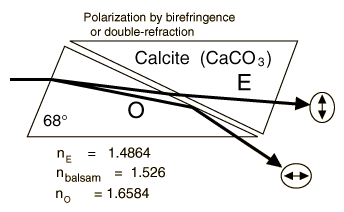
- Nicol prism: http://hyperphysics.phy-astr.gsu.edu/
The Wollaston prism was aligned somewhat differently and emitted two beams of polarized light. Dozens of other types of polarizing prisms were developed over the next few years.
-

- Wollason prism. Fgalore, courtesy Wikipedia commons.
Scientists now had a source of polarized light to play with, and play with it they did. Photometers and spectrophotometers (instruments that measured light intensity and character) were developed. They were used both in pure scientific research and in the chemical industry. Polarimeters (instruments that measures the change of polarized light passing through solutions) detected the presence of, and measured the concentrations of, specific chemicals in solutions.
Chemical synthesis, extractions, and purity analysis exploded in the mid-1800s, largely because of these instruments. The sugar industry was rife with fraud before the development of polarimeters, but once they became available accurate measurements of sugar concentration could be made. Chemists could accurately assay concentrations for the first time, allowing them to purify numerous substances. Medicines changed from ground herbs of unknown concentration to purified preparations with known potency.

Late 1800s Polarimeter. http://antiquesci.com/
Polarized microscopes were used in biology and medicine, but also in geology to assess the authenticity of gems and crystals. For photographers and astronomers, crossed polarizers were used to assess optical glass and lenses. Flaws and defects in the glass which were invisible to visual inspection showed very clearly when examined by polarizers.
There were even early attempts to use Iceland spar to create 3-D imaging. In 1894, a British physicist named John Anderton patented a system that would project paired images through magic lanterns each equipped with Nicol prism polarizers in different orientations. A viewer with opposite oriented prisms would reproduce a 3-dimensional image. While the system would work in theory, it was probably too bulky and expensive to ever gain widespread use. (Edwin Land created a similar system in the 1930s with his polarized film.)
Every one of these scientific instruments used prisms made of Iceland spar to create polarized light. Iceland spar was no longer a scientific curiosity; it was a major industrial component used in thousands of measuring devices. With only one source of the crystals, it wasn’t surprising that significant shortages of Iceland spar occurred. The situation became so severe that European instrument makers got the governments of Germany and France to request increased mining in Iceland, but the mine there was nearly exhausted.
New sources were found first in South Africa and later in Mexico, the U. S., and South America. Even with these new sources, the supply was always limited. Worldwide mining produced a few tons of optical grade Iceland spar, at most, each year. For example, the mine at Taos County, New Mexico produced 850 pounds (not tons, pounds) of Iceland spar in 1939.
Iceland spar Goes Modern
Edwin Land’s invention of polarizing sheets and films in 1928 helped alleviate the Iceland spar shortage, although polarizing film was only useful in certain applications. Some other polarizing crystals, both natural and artificial, were also developed. But Iceland spar continued to be used in a variety of optical instruments and remained in great demand throughout the 20th century.
By an interesting coincidence, Edwin Land created some of this demand. When the United States entered World War II, one of its first needs was a small, accurate gun sight for its warplanes and anti-aircraft guns. Aerial gun sights at the time were large bulky affairs with prisms and lenses. Land invented the optical ring sight, which consisted of two sheets of polarizing film and two optical wave plates sandwiching a crystal of Iceland spar. Iceland spar was considered a strategic resource by the U. S. government, which had classified studies done assessing the Iceland spar mines of South and Central American nations.
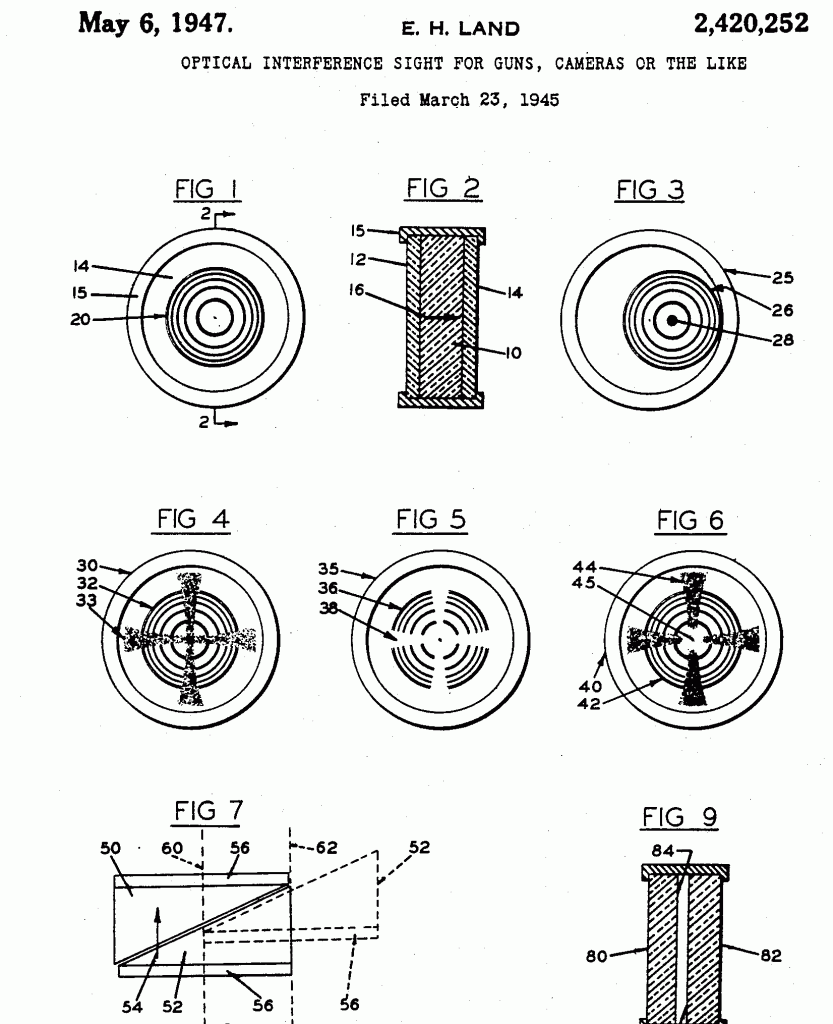
Drawings from US patent 2420252-0 for a polarized 'ring sight'. When the target is in position the polarization shows active crosshairs.
Optical calcite polarizers are used today as polarizers and beam-splitters in the the laser and fiberoptics industries. You can still find devices that contain Nicol and Wollaston prisms today, but the most common current use of calcite crystals is in Glan-type prisms. These can withstand very high luminance and are used to polarize laser light. Quartz and synthetic materials can be used in many, but not all of these applications, and synthetic calcite remains expensive and difficult to produce. Most of the optical calcite crystals used today are mined just like they were in the old days, which is why Iceland spar crystals remain rather pricey.
Perhaps the most interesting modern research using optical calcite is to actually make things invisible. Researchers have found that using a pair of shaped calcite crystals in certain media, they can effectively make small objects disappear in visible light. Light from behind the object bends right around it while passing through the two crystals. Viewed from the front it’s as if the object isn’t there. If you haven’t seen it, there’s a video of it as demonstrated at the 2013 Technology, Education and Design Conference HERE. It’s pretty amazing.
-

- Using two calcite crystals in certain media makes the object between them (a rolled up pink post-it note in this case) disappear. Credit Baile Zhang, Nanyang Technological University
So There You Have It
Obviously I’ve managed to get one piece of Iceland spar. But I wouldn’t mind a second, so it’s still on my Christmas list. Maybe I could do some fun tricks with disappearing lines and such. Until then we’ve already put the original piece to good use topping the Lensrental’s Tech Room Christmas Tree.

And if there’s an optical geek on your Christmas list – well, now you’ve got a great idea for an original gift. You can get them a nice piece of Iceland spar. And just think how much fun it will be when they ask what it is and, armed with this post, you can smugly tell them geeky stuff they didn’t know.
Roger Cicala
Lensrentals.com
December, 2013
Author’s Note: A few weeks ago someone said to me, “Why don’t you go write an interesting blog post about a rock, or something.” Challenge accepted.
References:
Abrahams, Peter: The Testing of Telescope Optics in Historic Times. Presented to the 1994 Convention of the Antique Telescope Society.
Eric Greene: Iceland spar.
Fries, Carl: Optical Calcite Deposits of the Republic of Mexico. United States Department of the Interior. Bulletin 954-D
Leó Kristjánsson: Iceland spar and it’s influence on the development of science and technology in the period 1780-1930. 3rd Edition. University of Iceland. 2010.
Leó Kristjánsson:Iceland spar and its Legacy in Science. Hist. Geo Space Sci., 3, 117–126, 2012
Ropars, G, et al.: A depolarizer as a possible precise sunstone for Viking navigation by polarized skylight. Proceedings of the Royal Society, Nov. 2011.
Vanderwerf, Dennis: Applied Prismatic and Reflective Optics. Chapter 3: Polarization Properties of Prisms and Reflectors. SPIE, 2010.
Xianzhong Chen, et al: Macroscopic Invisibility Cloaking of Visible Light. Nat Commun. 2011 2: 176.
Six Spring Stones
Six Spring Stones
Ruby helps rebirth and regeneration
Citrine brings abundance and creativity
Tourmaline aids protection and inspiration
Tiger's eye gives creative energy
Herkimer diamond empowers attunement to new energies and events
Moonstone creates a balance of old and new
Five things you always wanted to know about Red Jasper... but were afraid to ask!
Five things you always wanted to know about Red Jasper... but were afraid to ask!
Red Jasper
A passionate red crystal that promotes purpose and a desire to move forward
Birthstone Aries
Planet Mars
Element Fire
Chakra base
1. Red jasper placed at the foot of your bed ignites passion livening up your sex life
2. Under your pillow red jasper will help you remember your dreams
3. Carry or wear red jasper to stop those winter colds and flu
4. Holding red jasper will help when you are searching for new ways of doing something or trying to understand a new idea
5. Make a circle of red jasper on the floor around you when you meditate to help create a focused environment
Click here for more information or to buy Red Jasper
All information from my book The Little Book of Crystal Tips & Cures
Crystals for exams
I'm regularly asked "Which crystals will help me, my son, daughter, grandson, granddaughter or great-granddaughter pass, cope-with, not-get-stressed-by, keep-calm, not-worry, or focus-on exams?"
Who needs Shamanic Healing? By Guest Blogger and International Shamanic Healer Dawn Paul
Dawn Paul is a Shaman with an international reputation. I've known her for years and she's written this Guest Blog for us. Her Book - A Healer of Souls is available from Amazon
Who needs Shamanic Healing? By Shamanic Healer Dawn Paul
In social situations people react strangely when I say I am a shaman and that I work worldwide as a shamanic healer. “Isn’t that like voodoo?” they comment before walking away hurriedly. But I am keen to educate people about the benefits of shamanic healing because I believe that it is the best form of healing on the planet – it is certainly the oldest!
A shaman is someone who is responsible for the healing needs of his or her community, someone who works as an intermediary between this world and the spirit world to gain insight and knowledge as to the root of their client’s problem. A shaman is deeply connected to earth and to nature, and understands that there is information, knowledge and consciousness in all things - in each animal, plant and rock, thus he or she seeks to live in harmony with all of nature. He or she understands that there is only light energy or heavy energy and sometimes people need those energies bringing back into balance and alignment. A shaman also understands that a person’s soul is a fragile thing, which can take flight in a moment of trauma or fear and which needs to be bought back after the trauma has been cleared up so that the person can become whole again. Read more about soul loss and soul retrieval here. http://www.liberate-online.co.uk/Soul-Retrieval.aspx
In my shamanic healing practice I have seen countless miracles occur. I have seen men, women and children heal at the deepest levels, gain understanding about their spiritual and personal journeys from new perspectives and put years of trauma and abuse behind them to go on to lead happy and fulfilled lives. People come from all walks of life, from all religions and races and from all ages – my youngest client was 9months old and my oldest client is 90. I have written about their healing stories and my own journey in my book, A Healer of Souls http://www.liberate-online.co.uk/A-Healer-Of-Souls.aspx . Things happen to us, fact. But it is important to remember that we do not have to carry our burdens with us. We can first heal them, then let them go, then move towards a happier and more fulfilling and joyful life – the lives that we were always meant to lead!
Clients come to see me for all sorts of reasons – physical illness, depression, panic attacks and anxiety, feeling stuck, relationship problems to childhood sexual abuse to simply wanting to do better in life, or even run better businesses! It is wrong to assume that if we bury our past problems they are gone – they are still there and we use a lot of energy to keep them buried. While it takes courage to seek help with our problems initially, we never look back, we never regret it and we always wish we had done it sooner.
We are living in important times. As Gandhi said, “You must be the change you wish to see in the world.” The outside world is a reflection of the inside us. We can never have peace on earth when there is rage and anger inside of us. So, when we undertake our own healing work, not only do we help ourselves, but we also help those around us, and our beautiful planet.
Candle Quartz Crystal
Candle Quartz Crystal
These are quartz crystals that are
characterised by having many small terminations around their sides and/or base
all pointing in the same direction as the main termination or point. These
often resemble wax running down the side of a candle, hence the name. Each Candle
Quartz Crystal is unique; each is a natural work of art. The colour can be
white, off white often with a cloudy appearance. They may have brown, red,
pink, grey markings or inclusions and are often phantom crystals with clearly
defined white phantoms within. 
Common alternate names: female candle quartz crystal, female quartz crystals, celestial quartz crystal, candle quartz crystal, milky quartz crystal, cathedral crystal, cathedral quartz crystal, female milky quartz crystal, pineapple quartz crystal, white candle quartz crystal, white quartz crystal, seeker transformer crystal
Common source: Madagascar
Astrological associations: Pieces, Gemini
Chakra: all
Healing Properties: These special quartz crystals are amazing partners for
anyone exploring their past lives. The many terminations seem to act as
individual time machines each taking you back to another life. They are also
impressive tools for accessing the Akashic records.
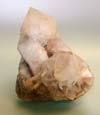
Candle quartz crystal clusters are ideal for therapy rooms and treatment rooms because they bring healing energy to any room. Consider placing these in offices or living rooms or any other space where disagreements or arguments may happen.
Female crystals are opaque, cloudy, mysterious in appearance. They contain a nurturing feminine energy that helps restore both physical and emotional injuries. Female candle quartz crystals work in the aura, the energy field around the body. All disease manifests in the aura before it becomes physically noticeable and candle quartz crystals can help to prevent diseases manifesting at this early stage. They are particularly good at helping people release emotions that they are holding onto unnecessarily which are holding them back and may, in the longer term, cause disease. Try giving one to a client or friend to hold during a healing session to see an instant effect.
You can work with Female Candle Quartz Crystals in the aura for brushing down or combing the aura after a crystal healing treatment. This helps to smooth out the aura and release anything that has “bubbled up” during the treatment.
Candle quartz crystals can illuminate our inner workings, our emotions and beliefs, bringing greater understanding of our self. Holding a candle quartz crystal whilst you meditate will help you listen to and hear your inner voice and guide.
Candle Quartz Crystal, Female Candle Quartz Crystals, Female Quartz Crystals, Celestial Quartz Crystals, Quartz Candle Crystals, Milky Quartz Crystals, Cathedral Crystal, Cathedral Quartz Crystal, Pineapple Quartz Crystal, White Candle Quartz Crystal, White Quartz Crystal, Seeker Transformer Crystal










